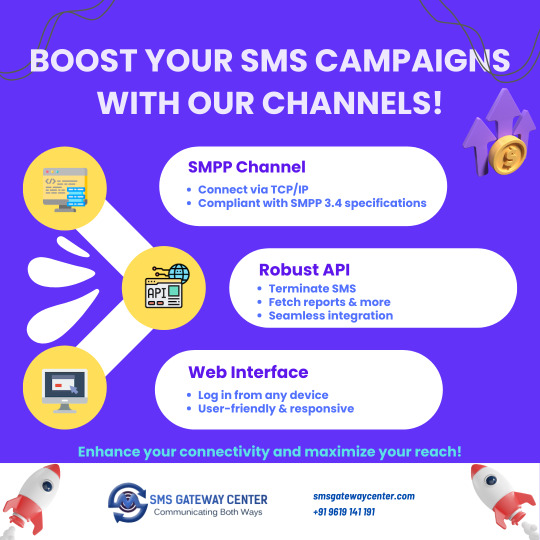#Telecom API Market
Explore tagged Tumblr posts
Text
Telecom API Market Size, Share And Trends Analysis Report
The global telecom API market was valued at USD 827.45 billion in 2030 and is estimated to expand at a CAGR of 21.3% from 2023 to 2030, according to a study conducted by Grand View Research, Inc. Growing demand for smartphones integrated with features such as GPS services, digital wallets, 5G, and Near-Field Communication (NFC), among others, is estimated to drive the market growth in the forecast period. Application programming interface (API) facilitates web-based solution developers to develop applications through a single point of contact using the capabilities offered by the application programming interface (API) platform for agile application development.
The increasing adoption of the Internet of Things (IoT) in the telecommunication sector is anticipated to sustain market growth over the forecast period. CSPs such as Orange, Verizon, AT&T, Inc., Google LLP, and others are providing their IoT API platforms to various sectors such as transportation, retail, utilities, and manufacturing among others. AT&T has an API marketplace to help solution providers quickly build web-based collaboration apps for their text, video, voice, and other communications services. The IoT platform developed by Orange namely Live Objects forms connections centrally through a web portal and standard API.
Web Real-Time Communication (WebRTC) API is a compilation of various standard APIs and protocols that handle simultaneously facilitate data sharing and peer-to-peer teleconferencing eliminating the necessity for installing any additional third-party plug-ins. The Telecom API market is expected to witness significant growth owing to the rising adoption of WebRTC by various Communication Service Providers (CSPs) and technology providers such as AT&T Intellectual Property, Huawei Technologies Co., Ltd., Vodafone Group, Orange, Cisco Systems, Inc., and Google among others. However, stringent government regulations for end-user data protection are expected to act as an inhibitor to market growth over the forecast period.
Gather more insights about the market drivers, restrains and growth of the Telecom API Market
Telecom API Market Report Highlights
• The messaging API segment of the telecom API market is predicted to account for the largest market share in 2022 and is expected to expand at a CAGR of 21.4% in the forecast period. This growth is attributed to the increasing adoption of A2P messaging by large organizations for applications such as product announcements, and promotional activities among others.
• The partner developer segment is estimated to expand at the fastest CAGR of over 22.0% in the forecast period. Thus, growth can be attributed to the rising number of internet users and increasing adoption of over-the-top (OTT) media services by organizations.
• Asia Pacific held a maximum revenue share of over 28% in 2022 and is projected to witness a healthy CAGR in the forecast period. This growth is owing to the increasing number of smartphone users in countries such as India and China.
• The telecom API market is fragmented and characterized by high competition with the presence of major global players such as among others. These companies are adopting various organic and inorganic growth strategies such as collaborations, mergers & acquisitions to increase their market presence and expand their existing product portfolio.
Telecom API Market Segmentation
Grand View Research has segmented the global telecom API market based on type, end-user, and region:
Telecom API Type Outlook (Revenue, USD Billion, 2018 - 2030)
• Messaging API
• Web RTC API
• Payment API
• IVR API
• Location API
• Others
Telecom API End-user Outlook (Revenue, USD Billion, 2018 - 2030)
• Enterprise Developers
• Internal Telecom Developers
• Partner Developers
• Long Tail Developers
Telecom API Regional Outlook (Revenue, USD Billion, 2018 - 2030)
• North America
o U.S.
o Canada
• Europe
o U.K.
o Germany
o France
o Rest of Europe
• Asia Pacific
o China
o India
o Japan
o Rest of Asia Pacific
• Latin America
o Brazil
o Mexico
o Rest of Latin America
• Middle East & Africa
Order a free sample PDF of the Telecom API Market Intelligence Study, published by Grand View Research.
#Telecom API Market#Telecom API Market Size#Telecom API Market Share#Telecom API Market Analysis#Telecom API Market Growth
0 notes
Text

Connect, engage, and convert your customers instantly with Inbox Telecommunication’s powerful WhatsApp API solution. Whether it's sending notifications, automating responses, or supporting live chat, our API empowers businesses with real-time communication. Scale smarter, build trust, and grow faster—one message at a time. #WhatsAppAPI #InboxTelecom #BusinessMessaging #CustomerEngagement
#telecom#startup#business#government#marketing#whatsapp api#sms marketing#bulk sms marketing#bulk sms service#bulk sms company#sms api#bulk sms#rcs message
1 note
·
View note
Text
The size of the global telecom API platform market was estimated at US$ 343.82 billion in 2023 and is projected to grow at a CAGR of 19.87% to US$ 1222.66 billion by 2030.
0 notes
Text

Enhance Your SMS Campaigns with SMSGatewayCenter’s Connectivity Channels
Find out how to maximize the effectiveness of your bulk SMS campaigns with SMSGatewayCenter's dependable SMPP Channel, adaptable API, and user-friendly Web Interface. Find out more about our robust connectivity options for successful SMS marketing.
#Bulk SMS#SMS marketing#SMPP Channel#SMS API#Web Interface#SMSGatewayCenter#SMS campaigns#SMS connectivity#SMS automation#telecom operators#SMS aggregators
1 note
·
View note
Text
The integration of bulk SMS for healthcare into telemedicine solutions is changing the way patients experience healthcare. Forward-thinking healthcare organizations have recognized the immense potential of SMS as a powerful tool to improve patient engagement and share essential information.
Connect with us through Whatsapp: https://wa.link/i8tc5f
0 notes
Text
Exciting digital updates in July! 🚀 Stay tuned for the latest innovations! #DigitalUpdates #July2023





Telecom Software Company in Chennai
0 notes
Text
The Benefits of Integrating Text-to-Speech Technology for Personalized Voice Service
Sinch is a fully managed service that generates voice-on-demand, converting text into an audio stream and using deep learning technologies to convert articles, web pages, PDF documents, and other text-to-speech (TTS). Sinch provides dozens of lifelike voices across a broad set of languages for you to build speech-activated applications that engage and convert. Meet diverse linguistic, accessibility, and learning needs of users across geographies and markets. Powerful neural networks and generative voice engines work in the background, synthesizing speech for you. Integrate the Sinch API into your existing applications to become voice-ready quickly.

Voice Service
Voice services, such as Voice over Internet Protocol (VoIP) or Voice as a Service (VaaS), are telecommunications technologies that convert Voice into a digital signal and route conversations through digital channels. Businesses use these technologies to place and receive reliable, high-quality calls through their internet connection instead of traditional telephones. We at Sinch provide the best voice service all over India.
Voice Messaging Service
A Voice Messaging Service or System, also known as Voice Broadcasting, is the process by which an individual or organization sends a pre-recorded message to a list of contacts without manually dialing each number. Automated Voice Message service makes communicating with customers and employees efficient and effective. With mobile marketing quickly becoming the fastest-growing advertising industry sector, the ability to send a voice broadcast via professional voice messaging software is now a crucial element of any marketing or communication initiative.
Voice Service Providers in India
Voice APIs, IVR, SIP Trunking, Number Masking, and Call Conferencing are all provided by Sinch, a cloud-based voice service provider in India. It collaborates with popular telecom companies like Tata Communications, Jio, Vodafone Idea, and Airtel. Voice services are utilized for automated calls, secure communication, and client involvement in banking, e-commerce, healthcare, and ride-hailing. Sinch is integrated by businesses through APIs to provide dependable, scalable voice solutions.
More Resources:
The future of outbound and inbound dialing services
The Best Cloud Communication Software which are Transforming Businesses in India
4 notes
·
View notes
Text
Build Your Own SMS Gateway: A Startup's Step-by-Step Guide
Empower Your Startup with a DIY SMS Gateway: Unlocking Communication Potential
In today's fast-paced digital landscape, effective communication is vital for startup success. Implementing a DIY SMS gateway can be a game-changer, offering cost-effective, reliable messaging solutions tailored to your business needs. This comprehensive guide walks you through the process of setting up your own SMS gateway, enabling you to directly connect with customers, send bulk notifications, and automate alerts without hefty expenses.
First, understanding what an SMS gateway is essential. Essentially, it acts as a bridge that allows your applications or systems to send and receive SMS messages through a telecom provider’s network. Building your own setup involves selecting the right hardware, software, and service providers, and integrating these components seamlessly.
Step 1: Define Your Messaging Needs
Before diving into technical setup, determine your messaging requirements. Will you send transactional alerts, promotional messages, or bulk notifications? Clarifying your goals helps in choosing appropriate tools and service providers. Consider volume, frequency, and the type of messages to ensure your setup aligns with your business objectives.
Step 2: Choose the Right Hardware and Software
For a DIY SMS gateway, you'll need a reliable server or computer, a GSM modem or a set of modems, and compatible software. Popular open-source solutions like Kannel or Jasmin can facilitate message routing and management. These platforms support multiple protocols and can handle high volumes efficiently.
Step 3: Select a Telecom Service Provider
Partnering with a reputable telecom provider is crucial. Look for providers offering competitive SMS rates, reliable delivery, and API access. Some providers also offer dedicated virtual numbers, which add professionalism and trustworthiness to your communications. Establishing a good relationship ensures smooth integration and support.
Step 4: Configure Your SMS Gateway
With hardware and provider in place, proceed to configure your software. This involves setting up API integrations, routing rules, and security measures. Proper configuration ensures your messages are delivered promptly and securely. Test your setup extensively before going live.
Step 5: Automate and Integrate
Leverage APIs to automate messaging workflows. Integrate your gateway with your CRM, marketing platforms, or customer support systems to send automated notifications, reminders, or alerts. Automation enhances efficiency and ensures timely communication, which is critical for customer engagement and retention.
Step 6: Monitor and Optimize
Continuous monitoring is vital. Track delivery rates, response times, and message success metrics. Use this data to optimize your configuration, improve delivery, and refine your messaging strategy. Regular maintenance and updates keep your DIY SMS gateway running smoothly and cost-effectively.
Building your own SMS gateway might seem complex initially, but with careful planning and execution, it offers a powerful, low-cost communication tool that can significantly boost your startup’s marketing and operational efficiency. For more detailed insights, visit diy sms gateway startup and explore tailored solutions for your business.
0 notes
Text
0 notes
Text
Key Players in Telecom API Market: A Competitive Landscape Overview
The global telecom API market was valued at USD 185.11 billion in 2022 and is projected to grow at a robust compound annual growth rate (CAGR) of 21.3% from 2023 to 2030. Telecom APIs (Application Programming Interfaces) are integral to managing various web-based services such as cloud computing, banking, and identity management within the telecom industry. These APIs facilitate the organization of programming instructions and adhere to standard protocols, enabling the seamless operation of telecom software solutions. The growing adoption of telecom APIs is helping to optimize system performance and provide cost-effective solutions by improving the functionality of existing web-based applications.
Telecom APIs are crucial because they offer agility in the development of mobile applications. By acting as a bridge between different software systems, these APIs allow developers to focus on building the core functionalities of their applications, rather than reinventing the wheel to create communication protocols from scratch. This significantly reduces the time, effort, and cost required for mobile app development.
Telecom APIs are revolutionizing the telecom sector by improving the flexibility and scalability of telecom systems. The ability to easily connect various applications, devices, and services enhances operational efficiency and enables businesses to rapidly deploy new services to their customers. As more industries and sectors adopt IoT technologies, the telecom API market will continue to expand at a phenomenal rate, providing significant growth opportunities for both telecom operators and technology providers.
In conclusion, the growing adoption of IoT, wearable devices, and cloud-based solutions are set to drive the telecom API market to new heights, with an anticipated CAGR of 21.3% from 2023 to 2030. The continuous need for seamless connectivity, cost-effective solutions, and efficient system integration will be key factors propelling market growth over the forecast period.
Gather more insights about the market drivers, restrains and growth of the Telecom API Market
Regional Insights
North America
In 2022, North America held the largest market share in the Telecom API market, accounting for over 29% of the total market revenue during the forecast period. This growth can be attributed to the strong presence of major market players in the region, including global technology giants like Broadcom, AT&T Intellectual Property, Google, and Oracle Corporation, among others. These companies are key contributors to the development and adoption of telecom API solutions, enhancing the region’s dominance in the market.
Additionally, the adoption of advanced network technologies, such as 4G and the ongoing improvements in 5G technology, has been a significant factor driving the high growth of telecom APIs in North America. With the integration of 4G and 5G networks, telecom APIs are enabling faster and more efficient communication services. These technologies facilitate a wide range of services, such as voice and video calls, as well as video and speech integration services. By using telecom APIs in conjunction with 4G/5G technologies, businesses can deliver more robust and high-quality services, leading to increased productivity and customer satisfaction.
Furthermore, as 5G networks continue to expand, telecom APIs will play a critical role in managing the large volumes of data and ensuring the efficient functioning of communication services. The North American market is expected to maintain strong growth as demand for enhanced connectivity and performance increases.
Asia Pacific
The Asia Pacific region is projected to be one of the most attractive markets for telecom APIs, driven by several factors, including the rapid increase in mobile subscribers and the growing adoption of 5G technologies. The region is experiencing the fastest compound annual growth rate (CAGR) of over 25.1% from 2023 to 2030, reflecting the strong momentum of market expansion.
According to a report by GSMA, as of 2021, there were more than 1.2 billion mobile internet users in Asia Pacific. This number is expected to grow to 1.5 billion by 2025, further boosting demand for telecom APIs. The growing number of mobile users across countries like China, India, and Japan, combined with the rapid rollout of 5G networks, is creating ample opportunities for telecom API providers to offer innovative solutions that cater to the increasing need for fast, reliable communication.
With the rise of mobile internet users, there is also a surge in the demand for services that rely on mobile networks, including mobile banking, IoT applications, digital entertainment, and e-commerce. Telecom APIs are central to the success of these services, as they provide the necessary interface to connect users, devices, and applications seamlessly.
The adoption of 5G technology is expected to significantly enhance the capabilities of telecom APIs, enabling more efficient data transmission, low-latency communication, and the integration of advanced technologies like augmented reality (AR), virtual reality (VR), and autonomous vehicles. As these technologies proliferate across Asia Pacific, telecom APIs will be essential for managing complex, high-volume, and real-time communications, driving continued growth in the market.
Browse through Grand View Research's Communication Services Industry Research Reports.
• The global mobile marketing market size was valued at USD 18.90 billion in 2023 and is projected to grow at a compound annual growth rate (CAGR) of 23.9% from 2024 to 2030.
• The global optical transport network (OTN) hardware market size was valued at USD 19.21 billion in 2023 and is projected to grow at a compound annual growth rate (CAGR) of 7.9% from 2024 to 2030.
Key Companies & Market Share Insights
The telecom API market is highly fragmented and characterized by intense competition among key players operating in various regions. Within each region or country, the market is often dominated by a few prominent Communications Service Providers (CSPs) that lead the charge in the development and deployment of telecom APIs. These CSPs, along with third-party solution developers and system integrators, are continuously adopting organic and inorganic growth strategies to maintain or expand their market presence.
Key Telecom Api Companies
Key growth strategies being implemented include:
• Mergers and Acquisitions (M&A)
• Partnerships
• Joint Ventures or Collaborations
• New Product and Service Launches
Order a free sample PDF of the Telecom API Market Intelligence Study, published by Grand View Research.
#Telecom API Market#Telecom API Market Analysis#Telecom API Market Report#Telecom API Market Regional Insights
0 notes
Text
BULK SMS: The Cornerstone of Scalable Business Communication

Revolutionizing Enterprise Messaging Through BULK SMS
Modern businesses operate in a world where real-time communication is critical. BULK SMS empowers companies to instantly disseminate messages at scale, bolstering client engagement and operational efficiency. From promotional alerts to transactional updates, enterprises leverage BULK SMS to stay connected across diverse geographies and customer bases.
Retailers, banks, logistics firms, real estate developers, and e-commerce platforms harness BULK SMS to deliver time-sensitive messages that capture attention and drive action. With significantly higher open rates than email, BULK SMS provides unmatched immediacy and penetration.
Selecting the Right BULK SMS PROVIDERS for Optimal Reach
Not all BULK SMS PROVIDERS are created equal. Enterprises seeking consistency, security, and scalability need providers that offer high-throughput infrastructure and seamless integration options. Advanced platforms deliver:
API-first ecosystems for automated execution
SLA-backed delivery speeds with real-time analytics
AI-augmented personalization at scale
Leveraging a trusted BULK SMS GATEWAY ensures rapid message delivery and cross-network compatibility. The best BULK SMS PROVIDERS offer global reach with localized delivery assurance, including superior service in high-growth markets like Tanzania.
The Rise of BULK SMS PROVIDERS IN TANZANIA
With mobile penetration surging, BULK SMS PROVIDERS IN TANZANIA have become pivotal to brand outreach and operational automation. Tanzanian enterprises—from fintech innovators to logistics companies—are adopting BULK SMS to:
Dispatch OTPs and payment confirmations
Automate customer notifications
Launch geo-targeted promotions in Swahili and English
Local compliance, multilingual templates, and carrier-grade infrastructure make BULK SMS GATEWAY IN TANZANIA an essential tool for regional scalability.
How BULK SMS GATEWAY Delivers Strategic Advantages
An enterprise-grade BULK SMS GATEWAY enables frictionless communication across fragmented systems. Integration-ready with CRMs, ERPs, and marketing suites, it allows:
Multi-channel fallback to ensure message delivery
Real-time delivery reports with engagement metrics
Time-zone aware scheduling for maximum visibility
BULK SMS PROVIDERS leveraging AI-driven routing engines and smart delivery rules increase conversions while minimizing latency and message loss.
AI + BULK SMS: A Force Multiplier for Campaign Efficiency
Intelligent automation is redefining BULK SMS engagement. Today’s forward-thinking BULK SMS PROVIDERS embed machine learning to predict customer behavior, refine messaging cadence, and dynamically alter content based on intent.
Features include:
Sentiment-aware response handling
A/B testing across audience segments
Location-aware delivery logic using telecom APIs
In regions like Tanzania, this tech-forward approach unlocks deeper customer engagement and improved ROI on communication spend.
Conclusion: Embrace BULK SMS for Unmatched Business Agility
Enterprises looking to scale fast and connect deep must adopt BULK SMS as a central communications strategy. Whether driven by global ambitions or regional growth in markets like Tanzania, choosing the right BULK SMS PROVIDERS and integrating a robust BULK SMS GATEWAY delivers tangible gains—from customer retention to operational resilience.
0 notes
Text
Mobile Proxies Explained: Use Cases and Advantages by Proxy Lust, Inc.
🛰️ What Are Mobile Proxies?
A mobile proxy is an intermediary that uses IP addresses assigned by mobile carriers (e.g., 4G/5G LTE networks) to route your internet traffic. Unlike datacenter or residential proxies, mobile proxies are tied to real mobile devices, making them far less likely to be flagged, blocked, or banned during intensive tasks like data scraping or social automation.
These proxies rotate through a pool of mobile IPs, dynamically assigned by telecom providers, which helps mimic legitimate mobile user behavior.
📲 Why Mobile Proxies Matter in 2025
The digital landscape in 2025 is dominated by AI detection systems, geo-targeted content, and increasingly sophisticated anti-bot frameworks. This means:
Datacenter proxies are easier to detect.
Residential IPs still face bans on high-volume tasks.
Mobile proxies offer stealth, authenticity, and flexibility.
In short, mobile proxies are now an essential tool for marketers, researchers, cybersecurity professionals, and automation experts.
🧠 Key Advantages of Mobile Proxies
✅ 1. High Trust Score
Mobile IPs are considered extremely trustworthy by websites, apps, and APIs. Why? Because they belong to real mobile network operators and rotate naturally, like actual human users switching networks.
✅ 2. Automatic IP Rotation
Most mobile proxies auto-rotate every few minutes or based on actions, which prevents IP bans and throttling. It also simulates real-world mobile behavior better than any static IP can.
✅ 3. Bypass Geo-Restrictions
Mobile proxies can be location-specific, allowing users to simulate browsing from a precise city or country. This is especially useful for:
SEO monitoring
Ad verification
Accessing region-locked content
✅ 4. Unmatched Anonymity
Since mobile proxies are dynamic and used by real users, they provide better anonymity and privacy, making it difficult for websites to trace back your actions.
✅ 5. Effective for Social Media Management
If you’re managing multiple Instagram, TikTok, or Facebook accounts, mobile proxies are the safest option to avoid getting flagged or banned by social platforms that aggressively fight automation.
🔒 Choose the Right Provider
At Proxy Lust, Inc., we provide:
Real 4G/5G mobile proxies from ethical sources
Global targeting options
High uptime and fast rotation
Monthly or pay-as-you-go plans
✅ Explore our mobile proxies here →
Mobile proxies are no longer optional in 2025 — they are a core part of digital operations. Whether you’re scaling a business or automating research, they offer unparalleled privacy, authenticity, and reliability.
If you’re ready to take your proxy setup to the next level, get in touch with Proxy Lust, Inc. and explore our premium mobile proxy solutions.
0 notes
Text
Top Platforms Enterprises Are Switching to in 2025
A Strategic Look at What’s Powering the Next Wave of Digital Transformation
According to our further move into 2025, the enterprise technology sphere is massively changing. Companies do not expect to be content anymore with the legacy platforms that provide inflexible silo solutions. They are instead going to the latest, cloud-native, artificial intelligence-enriched platforms that drive agility, scale, and customer-centric innovation.
We at Alt Digital Technologies are partnering with progressive businesses that are transitioning through this transformation. In our experience in the industry, these are the best platforms to which organizations are currently migrating in 2025, and the reason why these platforms are taking the lead.
1. commercetools – The Rise of Composable Commerce
With monolithic eCommerce systems starting to display their weakness, companies are turning toward commercetools, due to its headless/ API-first features. It provides the opportunity to create unique storefronts, connect new services fast, and provide their customers with omnichannel experiences.
Why enterprises are switching:
True composability for rapid experimentation
Seamless integration with CMS, ERP, CRM
Ideal for global commerce scalability
Alt Digital Insight: As a team of commercetools experts, we are supporting brands in starting to move beyond out-of-the-box eCommerce designs to more tail objet-oriented, top-performing digital shops.
2. Salesforce Industries (Vlocity) – Personalized Engagement at Scale
Salesforce still defines the CRM sector, but it is its industry cloud products (such as Vlocity) that are attracting the attention of big enterprises in 2025. Whether in financial services or telecom, they provide domain capabilities that are deeply coupled with the power of Salesforce data and AI.
Why it’s trending:
Industry-tailored data models and workflows
Built-in AI for guided selling and service
Faster time-to-market for CX innovations
Alt Digital Insight: Our area of expertise is to tailor Salesforce Industries so that businesses can get the most out of automation, compliance, and personalization of customers.
3. Adobe Experience Platform (AEP) – The Experience Data Powerhouse
Adobe Experience Platform is gaining some popularity as the customer data serve as the foundation of the marketing and CX strategies. AEP is a point where data of various sources can be centralized, subject to real-time intelligence, and drives continuous customer smooth, personalization.
Why it’s rising:
Unified customer profiles with real-time updates
Integration with Adobe Campaign, Target, and AEM
Scalable AI-driven personalization
Alt Digital Insight: We are an Adobe Experience Cloud partner. This is why we assist brands in unleashing the full power of AEP transforming disjointed data into linked experiences.
4. SAP S/4HANA Cloud – The New Core of Digital ERP
The ease of doing business, its intelligent automation, and real-time analytics are fast decommissioning legacy ERP systems in favor of SAP S/4HANA Cloud. Later in 2025, S/4HANA is being migrated by many large enterprises in their digital core transformation.
Why it matters:
Real-time data for faster decisions
Embedded AI for predictive insights
Seamless integration with supply chain, finance, HR
Alt Digital Insight: We also use custom workflows to support the needs of larger enterprises, and our ERP experts can make the migrating to S/4HANA effortless.
5. ServiceNow – Reimagining Digital Workflows
Companies are putting on ServiceNow to automate and streamline the mundane workflows inside and outside. ServiceNow has end-to-end visibility and efficiency, supplemented by a strong low-code platform, in all aspects of IT operations, customer service and beyond.
Why it’s winning:
Unified platform for ITSM, HR, and CX operations
AI-powered automation and workflow orchestration
Scalable for global enterprise needs
Alt Digital Insight: We also enable clients to digitize their operations and diminish friction in business processes with the help of modular capabilities of ServiceNow.
6. Microsoft Power Platform – Low-Code Revolution in Action
As digital agility has become a central enterprise objective, Microsoft Power Platform (Power BI, Power Apps, Power Automate, and Power Virtual Agents) is allowing citizen development in ways it has never been done before.
Why it’s popular:
Democratizes app development across teams
Strong integration with Microsoft 365 and Azure
Speeds up automation and data visualization efforts
Alt Digital Insight: We help organizations develop enterprise level apps and workflows to help them move faster with making decisions and to make them less manual.
7. Kubernetes & Cloud-Native Ecosystems (AWS, Azure, GCP)
Digital transformation is based on cloud-native infrastructure. Businesses are adopting Kubernetes and AWS, Azure, and Google cloud services to construct scalable, resilient, and modern applications architecture.
Why it’s foundational:
Enables microservices, containerization, and CI/CD
Greater scalability, cost-efficiency, and uptime
Supports innovation velocity with DevOps best practices
Alt Digital Insight: Our cloud engineering and DevOps professionals assist companies to modernize existing systems and enable businesses to run scalable and safe solutions.
Final Thoughts: The Shift Is Strategic, Not Just Technological
Not only do all these platforms possess superior technology, but they also have something in common, which is business agility, data intelligence, and user-centered design. They are not only implementing tools, but they are creating digital ecosystems that can change with their customers and markets.
We not only implement things at Alt Digital Technologies, but we are partners in transformation. Whatever the force to change the platform to the headless commerce model, unleash the potential of AI in CRM, or re-architect your data layer, our expertise is comprehensive to ensure your platform shift turns out to be a success.
0 notes
Text
Bulk SMS Services in UAE have become a powerful weapon for businesses and are evolving with time and technology. Any mobile marketing strategy must include a practical and effective marketing tool known as bulk SMS. Businesses can send marketing messages in bulk to a large number of subscribers at once thanks to bulk SMS. This style of SMS marketing is perfect for spreading critical information to a wide audience quickly and efficiently, such as promoting deals and events.
Connect with us through Whatsapp: https://wa.link/i8tc5f
#bulk sms#sms marketing#promotional sms#sms api#sms service provider#bulk sms in uae#bulksmsapi#telecommunications#telecom#bulk sms service
0 notes